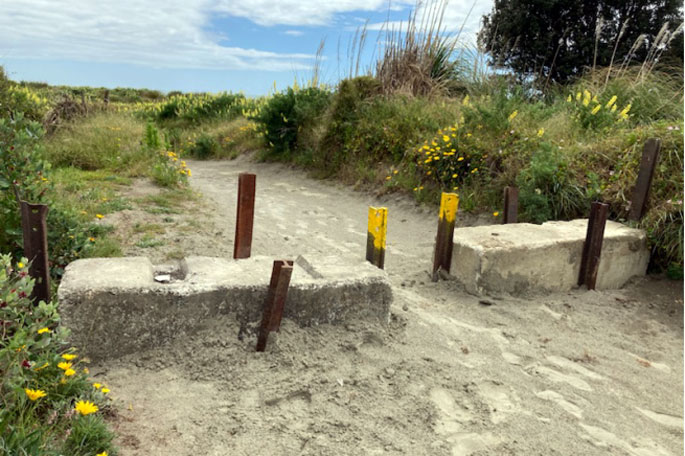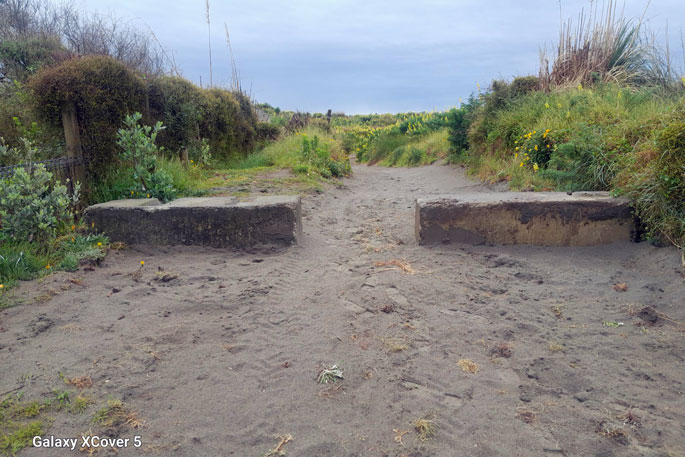Plans to make it legal for vehicles to access a Bay of Plenty beach through a pedestrian boardwalk has been slammed as unsafe by a Waiotahe Drifts resident.
Resident Ross Palmer took the Ōpōtiki District Council to task at its meeting on Tuesday over a report urging staff to investigate options to provide legal vehicle access through the established boardwalk.
“Shouldn’t the report be asking for guidance from council about how to address the increasing use of quad bikes in the subdivision, including on private property, roads and reserves?”
Mr Palmer said allowing pedestrians and motor vehicles to share spaces was a significant health and safety issue.
“The ongoing blasé attitude by officials regarding motorbike and quadbike use in the drifts subdivision flies in the face of national trends, health and safety and the ability of residents to enjoy, peacefully, our community without noise pollution and dangers ... of quad bikes and motor bikes.”
Residents had raised concerns with council about quad bikes and other unregistered vehicles using the boardwalk, private properties and dunes to access the beach.
“A number of our residents have significant concerns about quad bike use on the council reserves, roads and footpaths within the drifts subdivision. This issue is not addressed in the report, it’s not even mentioned.”
The report cites the original subdivision consent, the New Zealand Coastal Policy Statement 2010 and the Bay of Plenty Regional Council’s Regional Coastal Environment Plan, which all point to a need to prevent or control vehicles driving on beaches.
“Why [are] staff seeking a legal way to do something that not only contravenes every guidance document cited in the report, but also goes directly against the issue as stated in the title of the report. It’s dystopian to me. It’s Orwellian."
Mr Palmer said residents had previously outlined “several very inexpensive ways” the council could keep quadbikes from using pedestrian paths and reserves.
“A few bollards or restrictive gates would solve most of the issues.”
 Attempts to block traffic to Ohiwa Spit from the end of Ohiwa Harbour Road using 1.5 tonne concrete blocks has been twice thwarted. Photos: Ōpōtiki District Council.
Attempts to block traffic to Ohiwa Spit from the end of Ohiwa Harbour Road using 1.5 tonne concrete blocks has been twice thwarted. Photos: Ōpōtiki District Council.
Mayor David Moore said there was nothing the council could do to stop someone riding along the paper road between the houses and the sand dunes.
The idea of getting the quad bikes to use the boardwalk was to stop them from making their own tracks through the sand dunes, damaging vegetation, he said.
“There are currently about seven access points were people have been driving through to that beach.”
Mr Moore said he would like to see some public consultation at Waiotahe Drifts.
“I’d like to find out what’s desired out there before we spend a lot of time on this.”
During discussion of the matter, deputy mayor Shona Browne was the only person to raise the question of Mr Palmer’s safety concerns.

“We allow vehicles on our beaches in Ōpōtiki,” councillor Barry Howe said. “We’re always going to get those hoons and idiots but the majority of people are pretty good.”
The council agreed to direct staff to investigate options for beach access for vehicles, after being assured that any measures put in place would require community consultation.
Vehicle prohibition not easy to achieve
Planning and regulatory group manager Gerard McCormack told council that stopping vehicle access to beaches in the Ōpōtiki district was not always as easy as just putting in fencing or bollards.
As an example, he said council had tried to stop vehicles accessing the spit at the end of Ohiwa Harbour Road, which is a New Zealand dotterel nesting area.
“The extent to which some people will go to break the rules is often surprising,” Mr McCormack said.
“We installed concrete barriers to protect the birds from vehicles. These are 1.5 tonne concrete blocks buried half in and half out of the sand. Within a week, they were moved apart to allow vehicles to drive through.
“We moved the concrete blocks back together, buried them deeper in the sand and anchored them with 1.5 metre railway iron stakes. Again, within a week, the stakes had all been removed and one concrete block had completely disappeared.”

He said heavy-lifting machinery would have been required for this.
“Not only did the people who want to break the rules go to great lengths and expense to do so, many other people must have watched this happening and walked by.
“Vehicles in that section of the beach endanger our rare native birds, endanger other beach users who don’t expect vehicles in that section of the beach because they are prohibited, and cause damage to dunes leading to more erosion and loss of habitat.”
He said the council’s Antenno app was a good way to report people doing this or to call the police.
Mr Howe said he disagreed with the council’s decision to block off the Ohiwa Spit.
“I was not surprised that someone had done that. I don’t believe that should ever have been blocked off because that’s a very popular fishing spot for surfcasters. The dotterels can find somewhere else.”
Public Interest Journalism funded through NZ On Air.




0 comments
Leave a Comment
You must be logged in to make a comment.